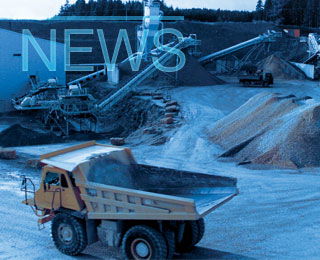This week Indonesia's Ministry of Industry addressed the growing issue of overcapacity in the cement sector by implementing a new moratorium policy and new investment arrangements. At the same time, the industry is transitioning to more sustainable cement production as it targets a net zero future.
Ignatius Warsito, director general of the Chemical, Pharmaceutical and Textile Industry (IKFT) of the Ministry of Industry, explained the condition of overcapacity of the cement industry is present in almost all regions, except for Bali-Nusa Tenggara and Maluku-Papua. “The biggest percentage of overcapacity occurred in Java, which is more than 55.4 per cent,” added Warsito.
“Currently, the national cement industry consists of 15 integrated cement companies spread from Aceh to Papua, with a total installed capacity of 116Mta. Currently, our cement industry is still experiencing an overcapacity of 51.8Mt or 45 per cent,” he explained.
According to Mr Warsito, new investments in cement factories should still be directed at the regions of Papua, West Papua, Maluku and North Maluku. "This arrangement will be reviewed if the national average utilisation has reached 85 per cent," he said.
Cement capacity and utilisation
The country's installed cement capacity was currently estimated at 116.8Mt at the end of 2022 by PT Indocement (Heidelberg Materials). It is forecast by the company to grow to 119.8Mt in 2025. Meanwhile, utilisation levels were recorded at 54 per cent in 2022 and are not expected to rise above 56.9 per cent by 2025, says PT Indocement. Cement demand in 2022 reached 63Mt, which was down 3.5 per cent from 65.2Mt in 2021.
The health of the industry has deteriorated substantially since 2012 when capacity and demand were more or less in step at 61Mta and 55Mta, respectively. The utilisation rate in 2012 was also at a record 92.9 per cent. The gap between cement capacity and demand has been widening ever since, while utilisation has almost halved. Cement demand totalled 5.291Mt in June 2023, down just 1.1 per cent on 5.35Mt recorded in 2022 but down 2.2 per cent from 5.463Mt recorded in 2021. The only regions seeing strong domestic growth in cement production in the 1H23 were Kalimantan, up 7.8 per cent, and Bali and Nusa Tenggara, which rose by 11.6 per cent.
The solution for domestic cement producers has been to turn to the export markets with overcapacity reaching as much as 51.8Mt or 45 per cent. "Total exports of cement and clinker in the 1Q23 increased by 11.57 per cent compared to the same period the previous year. This is in line with the increasing demand in foreign markets,” commented Warsito.
Taking steps towards Net Zero
While balancing supply and demand has been challenging for the sector, it has also been looking to create a more sustainable production base. Indocement is working with Amita Holdings, a Japanese environmental consulting company, on a two-year feasibility study to investigate ways to make production carbon neutral. The study will commence with trials of wastes for alternative raw materials and municipal solid waste (MSW) used a s refuse-derived fuel (RDF).
Cement producers have increasingly had to consider alternative fuels (AF) as the price of coal has increased significantly since December 2020. This has increased production costs and caused supply shortages. "Coal for the cement industry is the main raw material and fuel which has a percentage of up to 40 per cent in the production and cost structure," commented Mr Warsito.
Pressure is also being put on governments of developing countries by the Global Cement and Concrete Association (GCCA) and Mission Possible Partnership to move away from bagged cement deliveries to bulk deliveries. Moreover, cement in Indonesia is often hand-mixed on site, which risks inefficient use of the product. This method, without formal recipes or quality control, can lead to overuse of cement. By introducing bulk cement and ready-mix concrete services, the carbon intensity of cement can be reduced in emerging countries such as Indonesia.
Running alongside this initiative will be “The Zero Over Dimension Overload” policy that targets logistic costs. Currently 80 per cent of cement is transported by trucks in Indonesia, and the size and volume of trucks can be adapted to better maximise load capacity. The cement industry has submitted three proposals prior to the implementation of this policy, namely adjusting the driver/kir system (vehicle inspection) to vehicle design and road class, implementing a multi-axle policy, and increasing the quality of road-carrying capacity. As of November 2019, the 73 offices for Vehicle Weighing or weighbridges managed by the Director General of Land Transportation of the Ministry of Transportation found 39 per cent or 809,496 vehicles out of 2,073,698 violated the regulation. The most common violations (84.43 per cent) were for overcapacity.
Summary
Indonesia is experiencing growing industry pain as it seeks to balance its installed cement capacity with export opportunities and more sustainable production. However, cement demand is not expected to sufficiently improve to alleviate low capacity utilisation levels in the medium term. Therefore, investment in new plants and further capacity will remain limited.
